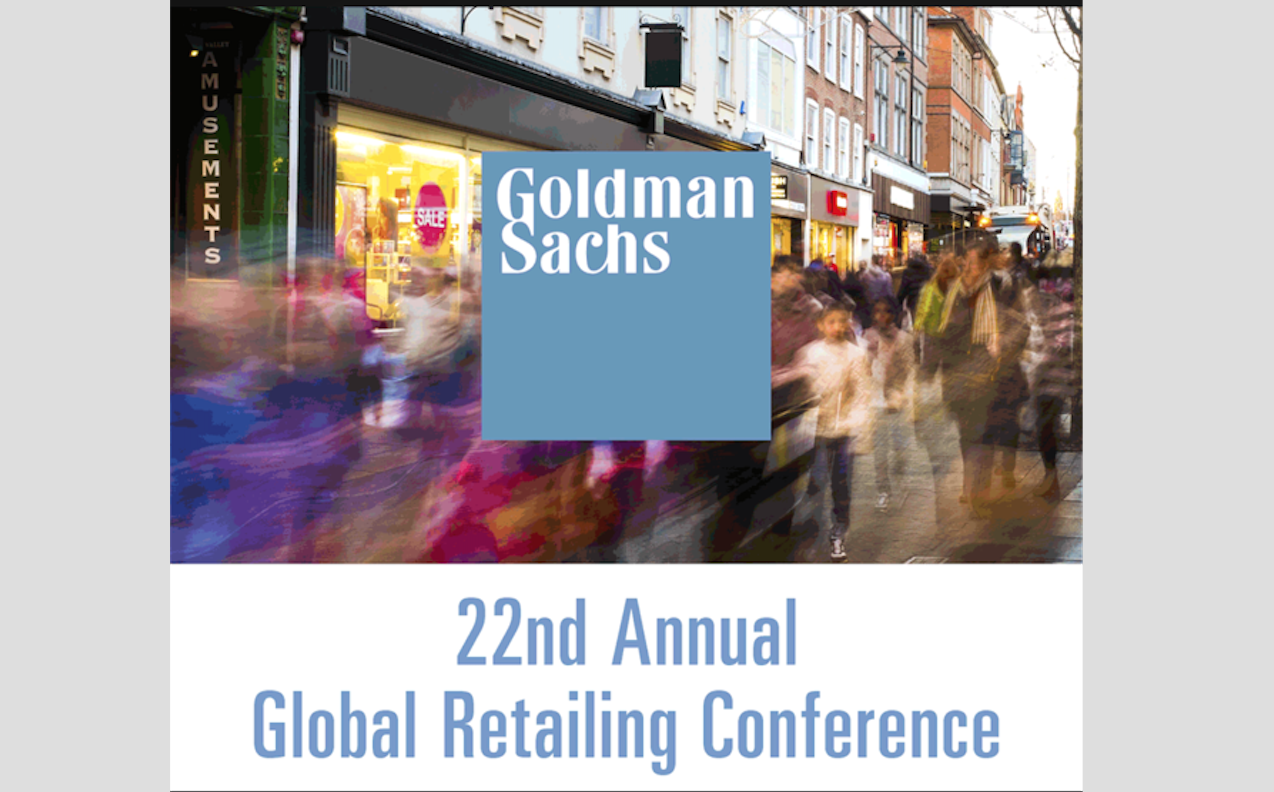This week, we attended the Goldman Sachs 22nd Annual Global Retailing Conference. Below are six major themes that emerged as key topics of conversation over the two-day conference.
1) More retailers see omnichannel as the solution. The rapid adoption of online shopping has happened significantly faster than the 50 years it took for mall shopping to become widespread. Retailers and pure-play ecommerce companies alike are working to understand what the landscape will look like in the future and what their roles will be. We believe the answer is some combination of stores, e-commerce and mobile commerce.
A number of pure-play e-commerce companies—including Warby Parker, Nasty Gal and Bonobos—are starting to open stores, given the high cost of customer acquisition online. Several omnichannel retailers commented at the conference that, despite lower traffic in stores, conversion is higher. That suggests that customers who do come into stores are more valuable; they have done their research and are ready to make their purchases. One surprising benefit to omnichannel retailers has been the popularity of the buy-online, pick up in-store method of delivery. This eliminates the cost of shipping to customers and minimizes the chance that they will return the merchandise, which is always a significant expense to retailers.
2) What role does real estate have in the future of retail? Questions about real estate and the value of opening stores came up often, due to the rapid growth of the online channel. Retailers still see value in stores, as many customers still want to shop in them because they enjoy the experience and want to touch and feel the products. That said, we do not know of many established retailers that are growing their store bases significantly. Mall owners are investing in improving the customer experience and their offerings at A malls. At the same time, there are questions surrounding B and C malls and their place will be going forward.. Historically, apparel retailers made up about half of a mall’s volume. Today, that percentage is closer to 35%—and likely declining. In addition, some retailers have sought to monetize their real estate. For example, Macy’s recently worked with Tishman Speyer in Brooklyn to sell off a portion of one of its sites there and to secure additional funds to be used to renovate the location.
3) The consumer is healthy; spending is bifurcated. Commentary from retailers at the conference suggests that consumers are doing just fine—they have money to spend, although they are selective about where they spend it. The apparel category has been weaker, as spending has been skewed toward experiences such as entertainment and dining out at restaurants. In addition, strength in categories such as athleisure and beauty has pressured apparel. Still, the consensus seems to be that denim is making a comeback.
4) Off-price is thriving as consumers seek brands at a discount. Consumers have come to expect branded merchandise at a deep discount. That bodes well for the off-price channel. At the conference, we heard leaders from Hudson’s Bay Company comment on the strong performance of its Off 5th stores; Macy’s executives say that feedback on its Macy’s Backstage concept is favorable; and Nordstrom executives say that the company has plans to expand its Nordstrom Rack stores into Canada over the next few years.
5) Private labels are emerging in the beauty category. We heard from a number of management teams, including those from ULTA and Macy’s (which recently bought Bluemercury), about the successes in their label and exclusive businesses in the beauty space, in both skincare and color. We believe Sephora has a strong private label business, too. Anthropologie has seen early favorable results, as well, and its management has identified beauty as a growth opportunity. In addition, H&M will launch a private label beauty collection in stores this fall.
6) Everyone is targeting millennials. There was a lot of discussion at the conference about millennial customers, defined as those ages 15 to 35. The focus is on this group because, at the high end of the age range, they are approaching their peak spending years, their mid-30s. Millennials are more technologically savvy than prior generations and are 50% more likely to research a product before buying it. They are also early adopters and have a culture of peer review, all of which make them a valuable retail consumer demographic.
